Holistic System Design
By understanding the chromatographic principles outlined within this primer and how they are applied, it becomes apparent that more than just small particles and higher pressure must be considered to maximize separation performance. In order to attain the chromatographic benefit from sub-2 µm particle columns, it is necessary to run these columns on an instrument specifically designed to accommodate the pressures produced by smaller particles, as well as minimize band spreading. This cannot be achieved with conventional HPLC systems.
The ACQUITY UltraPerformance LC® System is a holistically designed solution that improves the performance and analytical data quality of chromatographic separations by considering all aspects of instrument and column design.
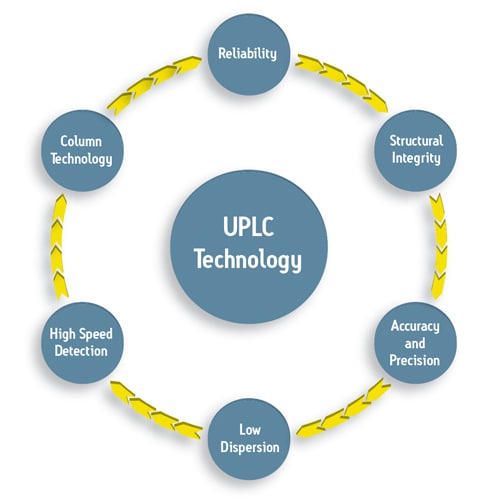
Figure 50: Holistically designed UPLC Technology.
It should now be clear that the key to UPLC separations is the combination of the instrument and column performance that allows chromatographers to fully realize and harness the power of sub-2 µm particle columns. This is achieved by minimizing band spreading within [intra-column] and outside [extra-column] of the column and being able to operate at the optimal linear velocities [and pressures] of these small particle columns [Figure 51].
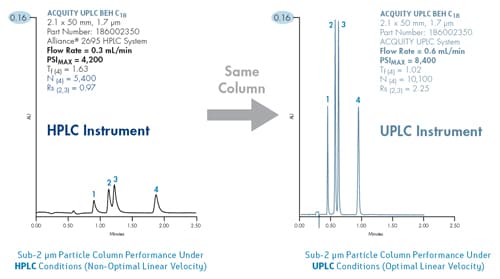
Figure 51: The ability to operate in a fast, low band spread LC instrument capable of operating at the optimal linear velocity is crucial to realizing the performance gains of sub-2 µm particle columns. In this example four caffeine metabolites are analyzed using the same chromatographic conditions [except for flow rate as noted] on a fully-optimized, microbore HPLC instrument vs. a standard ACQUITY UPLC Instrument. The improvements in efficiency, resolution, peak shape and peak height illustrate the benefits of UPLC Technology and its holistic system design.
Maximizing Separation Power
In order to maximize separation power, one can combine the use of small particles with elevated temperature and elevated pressure to develop ultra-high efficiency separations using UPLC Technology.
Figure 52A is a single 150 mm long 1.7 µm UPLC column producing just under 40,000 plates at 90 °C. A second column was added in series to produce a length of 300 mm, resulting in a plate count of 83,000 [Figure 52B]. The full pressure range of the ACQUITY UPLC System is exploited by adding a third column in series, resulting in a 450 mm long UPLC column packed with 1.7 µm particles. As observed in Figure 52C, an efficiency of 121,000 plates is achieved in only 8 minutes.
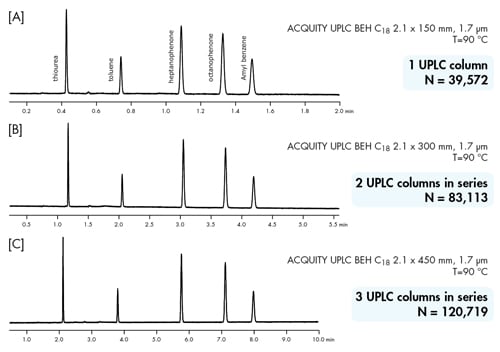
Figure 52: Combining elevated temperature with UPLC Technology to maximize plate count.
Gradient separation power can also be increased using the same logic. In this example, two 150 mm long, 1.7 µm UPLC columns [total length 300 mm] were linked in series to dramatically improve the information achieved for metabolite identification [Figure 53]. A peak capacity of over 1,000 was achieved within a one-hour run time. The ability to fully characterize this urine sample allows for the identification of metabolites of candidate pharmaceuticals, detection and identification of toxicity markers, and detection of toxins in therapeutic drug monitoring. In this case, resolving power, and therefore mass spectral quality, is dramatically improved, resulting in simplified data analysis, improved detection limits, and increased assay confidence.
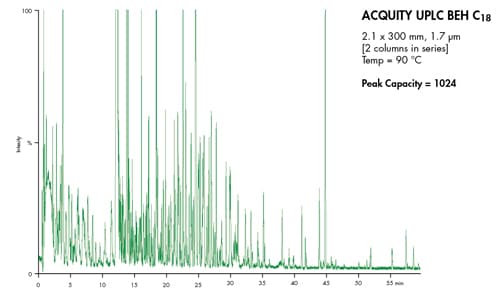
Figure 53: Combining elevated temperature with UPLC Technology to maximize peak capacity in a diabetic urine sample.
A Single System for HPLC and UPLC Separations
The ACQUITY UPLC System is designed to meet mounting organizational challenges to deliver products to market faster while maintaining or improving the quality of information. Since 2004, countless organizations have adopted UPLC Technology as a routine analytical platform, displacing conventional HPLC.
When adopting a new technology, it is important to consider its capabilities to meet existing and future demand. With UPLC Technology, one can invest in the future by utilizing a single system with the capability to optimally run sub-2 µm columns, and the ruggedness and robustness to run legacy HPLC methods. This means a single technology platform can be utilized independent of the separation needs, thus facilitating improved productivity by simplifying method transfer from site to site.
Figure 54 shows an example of the ability to run the ACQUITY UPLC System as a standard HPLC. This is the USP method for Excedrin [over-the-counter pain reliever] run on a conventional HPLC System [Figure 54A] and on an ACQUITY UPLC System [Figure 54B]. The chromatographic method, mobile phases, sample and column were simply moved from one instrument to the other. As a result of optimal system design, higher efficiency and sensitivity are observed for the same assay on the ACQUITY UPLC System without changes in selectivity or relative retention.
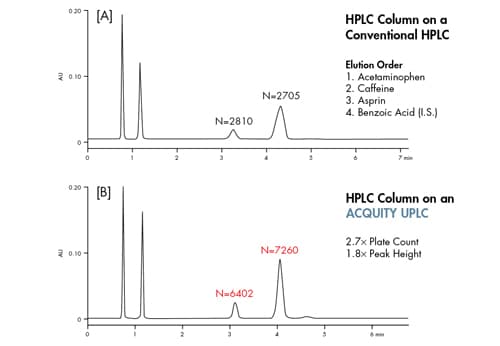
Figure 54: Performance of the ACQUITY UPLC Instrument as a standard HPLC. XBridge C18 4.6 x 100 mm, 5 µm column run at 2.0 mL/min at 45 °C in a 73:23:3 water:methanol: acetic acid mobile phase. Detection at 275 nm, 5 Hz, digital filter = 0.1.
Conclusion
This technology primer is designed to provide the reader with a basic understanding of the chromatographic principles on which UPLC Technology is based. It is our hope that the reader now understands the significant improvements in resolution, sensitivity and speed that can be achieved for chromatographic separations by minimizing the band spreading contributions of both the instrument and the column. In addition to minimal band spreading, such a system needs to be capable of operating at the optimal linear velocity [and pressure] for small [sub-2 µm] particle columns. The ACQUITY UPLC System was designed to meet the present and future needs of separation scientists.
The theoretical efficiency and resolution gains described in this primer were predicted decades ago. For the first time, theory has been put into practice on a commercially available scale with the introduction of the ACQUITY UPLC System in 2004. Since then, many thousands of separations scientists around the world have embraced UPLC Technology and the practical benefits it can provide their organization. The ACQUITY UPLC System allows organizations to more effectively manage company assets by improving the quality of the chromatographic information and reducing the amount of time necessary to acquire this information. This drives organizational productivity by overcoming many of the challenges and bottlenecks present in the analytical separations laboratory. Besides providing obvious and significant consumable cost savings, shorter, more reliable separations also benefit the environment by requiring significantly lower quantities of organic solvents.
Interestingly, most leading instrumentation manufacturers, who originally downplayed the importance of a higher pressure-capable chromatographic system [citing safety, robustness, sample compatibility, etc. concerns], have now validated the need for such an LC platform by developing various higher pressure capable systems of their own. Although these systems do come with a fair bit of compromises [e.g., lower pressure limits, large band spread, limited detection choices, etc.] this unmistaken trend towards higher chromatographic performance does indicate that the separation science is still advancing.
References for Further Reading:
| < Previous |